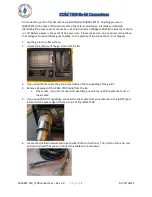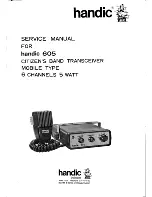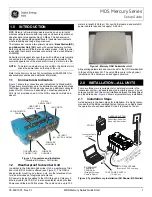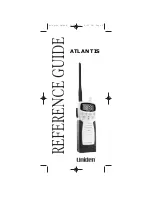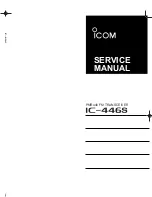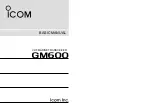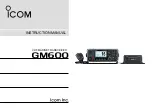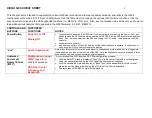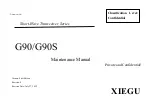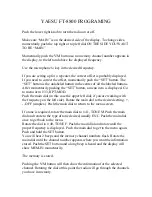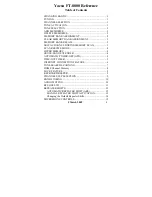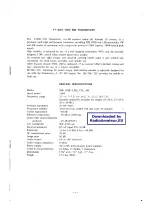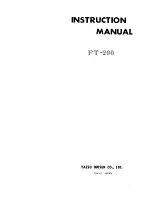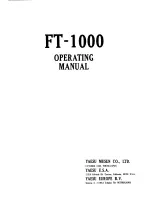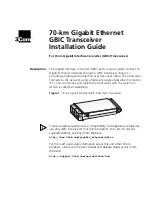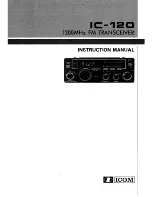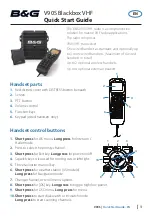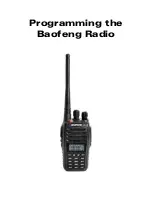
ADEMCO 5883H
RF Transceiver
I N S T A L L A T I O N A N D S E T U P G U I D E
INTRODUCTION
The 5883H RF Transceiver Module:
•
contains an RF receiver and a transmitter,
•
is intended for use with 5800 series RF transmitters, including bi-
directional wireless units,
•
receives alarm, status, and control messages from 5800
transmitters, and passes these messages to the control panel via
wired connections, which then responds accordingly (arm/disarm
the system, initiate an alarm, etc.),
•
transmits system status and other conditions to bi-directional
devices,
•
emulates the functions of a 5800TM module,
•
features a Spatial Diversity system that virtually eliminates the
possibility of "Nulls" and "Dead Spots" within the coverage area,
•
incorporates new high-security encryption technology, and
•
supports the number of zones shown in the chart at right.
RF Zones Supported
5883H
Depends on the control with which it is used. See
the control panel’s instructions for specific details.
If "SET UP ERROR" (alpha keypads) or "E4 or “E8”" (fixed-
word keypads) is displayed on the system's keypad, it indicates
that more than the permitted number of wireless zones have
been programmed, and none of the zones will be protected.
KEYPAD
TERMINALS
ON CONTROL
BOARD
CONTROL
PANEL*
DATA OUT
TO 5883
DATA IN TO
CONTROL
*CONTROL MUST BE CAPABLE OF
SUPPORTING A 5800 RF SYSTEM
5883H
TRANSCEIVER
5800 SERIES
WIRELESS
TRANSMITTERS
2-WAY
WIRELESS
KEYPAD
5883-003-V0
2-WAY
TRANSMISSION
Figure 1. Block Diagram
MOUNTING
CLIP
CABINET
DETAIL D
ANTENNA AND GROUNDING LUG INSTALLATION
ANTENNA
MOUNT
(2 PLACES)
ANTENNA
(2)
SCREW
(2)
MOUNTING
CLIP
CONTROL
CIRCUIT
BOARD
BOARD
SUPPORTING
SLOTS
HOLES FOR ANTENNAS
AND GROUNDING LUGS
RECEIVER CIRCUIT BOARD
(See Detail D)
+
+
+
+
RCVR BRD
DETAIL A
SIDE VIEW
OF BOARD
SUPPORTING SLOTS
DETAIL B
SIDE VIEW
OF MOUNTING
CLIP
DETAIL C
SIDE VIEW
OF MOUNTING
CLIP
GROUNDING
LUG
(2)
pcb_RF_mount-V0
CIRCUIT BOARD
CABINET
Figure 2. Installing the 5883H Board in the Control’s Cabinet
(Check the control’s Installation Instructions for applicability.)
MOUNT THE MODULE OR PC BOARD
5883H can be mounted remotely, or, with some controls, can be
mounted inside the control's cabinet.
When mounting, make sure
the antennas do not touch metal surfaces.
First, Check for RF Interference:
Before mounting permanently,
use the red RF Interference LED to check for strong local radio
frequency interference at the intended mounting location. If this
LED is continuously lit, the 5883H module should be relocated.
Removing the Cover
Remove 5883H's cover by inserting a screwdriver blade in the slot at
the center of the cover's lower edge to release the locking tab.
Replace the cover when installation is complete if unit is not
mounted within controls
cabinet and secure with screw through
bottom locking tab.
Mounting inside the control's cabinet
(refer to Fig. 2):
1. Remove the 5883H’s circuit board from its base by bending back
the two flexible plastic tabs that hold the board's lower edge.
Discard the 5883H's unused plastic cover and base.
2. In the control's cabinet, unfasten and move the control circuit
board downward (if already installed).
3. Hang two short (black) mounting clips (provided) on the raised
cabinet tabs in the cabinet, as shown in Detail B of Figure 2.
4. Insert the top of the 5883H’s board into the supporting slots at the
top of the cabinet (Detail A). Swing the bottom of the board into
the two short (black) mounting clips installed in step 3, and
secure it to the cabinet with the accompanying screws.
5. Insert the top of the control’s board into the slot in the black clips
holding the lower edge of the 5883H board (see Detail B); position
two long (red) clips at the lower edge of the board (see Detail C).
6. Swing the lower edge of the control board into place, and secure
with two additional screws.
7. Insert the grounding lugs (provided) through the top of the
cabinet and into the left-hand terminals of the antenna blocks (at
the upper edge of the 5883H's circuit board). Secure it to the
cabinet with the two screws provided, see Detail D.
8. Insert the 5883H’s two antennas through the two openings in
the top of the cabinet, one into each block’s right-hand terminal,
and tighten the screws to secure them.
9. Affix the 5883H's Summary of Connections label to the inside of
the control's cabinet door.
UL
•
All power-limited wiring must be separated from non-power
limited and high-voltage wiring by 1/4" (6.4 mm).
•
All circuits are supervised.
•
Only one wire per terminal is permitted. If daisy-chained
configuration is required, pig-tail wires together so that only a
single wire is terminated under the screw.
Mounting the 5883H remotely
NOTE: If mounting 5883H in its own enclosure, the supplied PCB
mounting clips, grounding lugs, and screws are not needed.
1. All wiring between the 5883H and the control panel must be
located in a conduit.
2. For concealed wiring, route wires through the rectangular
opening at the rear of the base before mounting. For surface
wiring entry, a thin breakaway area is provided along the base's
right edge.
3. Mount the module in the selected location. For greatest security,
use all four mounting holes (two key slot holes and two round
holes) in the plastic base. (Refer to Detail D in Figure 2 above.)
4. Install each antenna in the respective right-hand terminal of the
two terminal blocks at the upper edge of the 5883H’s circuit
board, and tighten the screws to secure them.
5. Affix the 5883H's Summary of Connections label to the inside of
the housing cover





